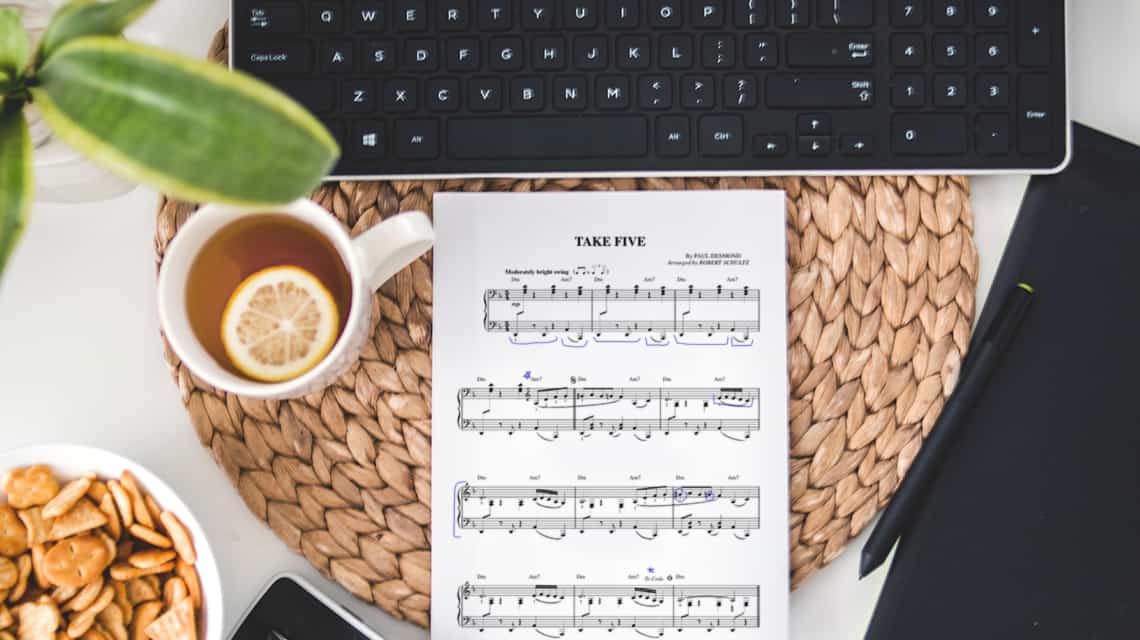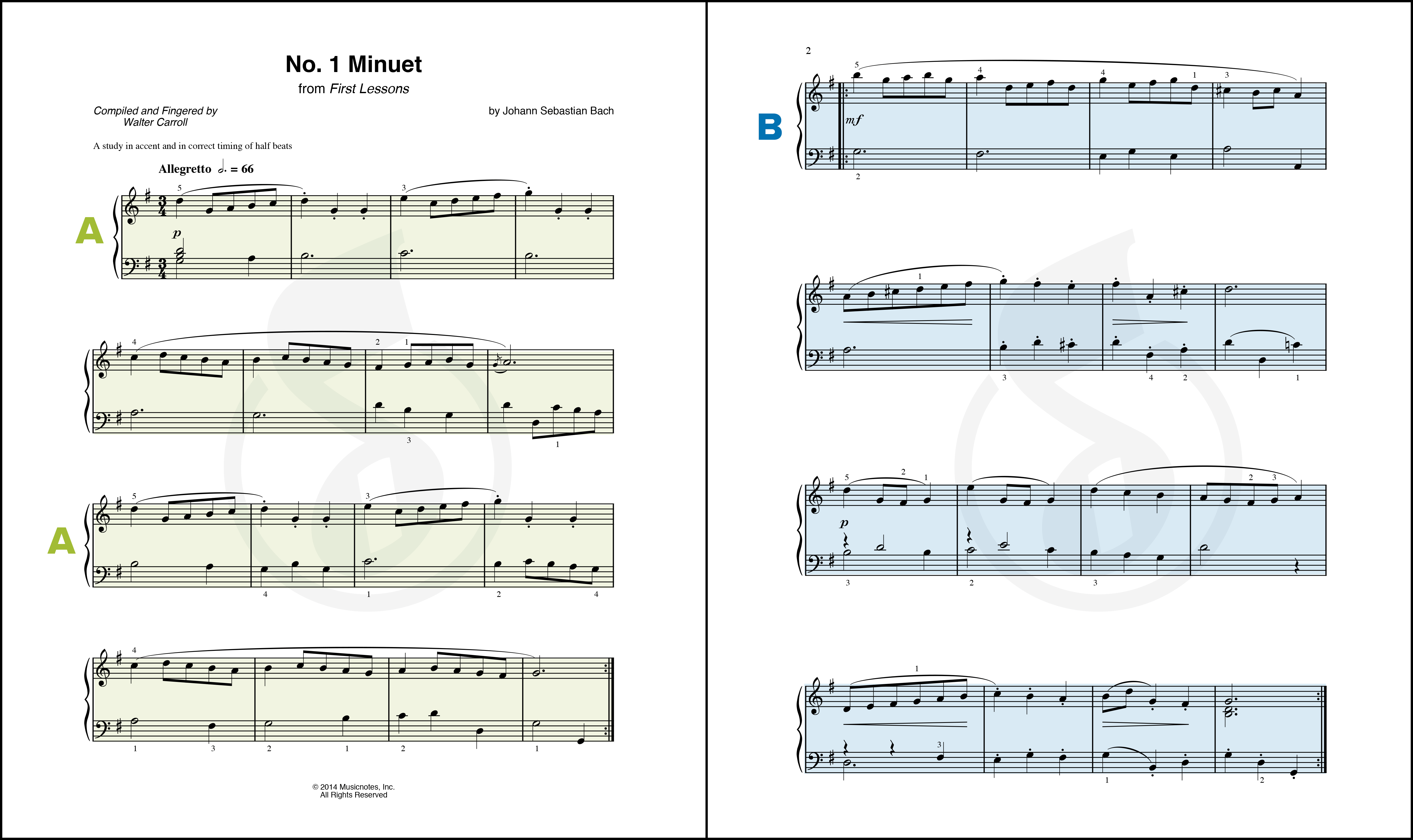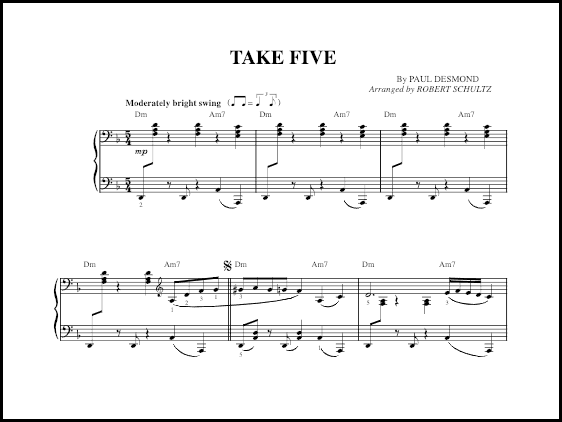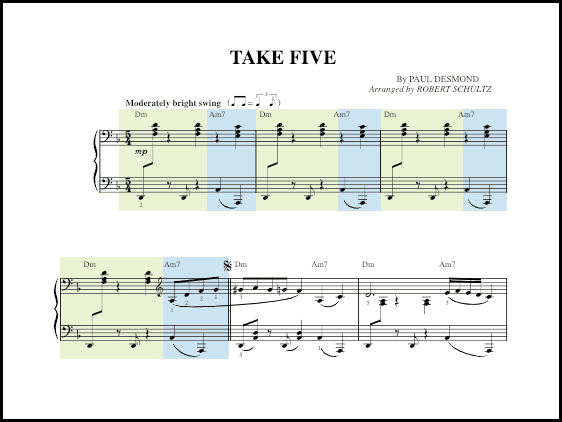Complex Time Signatures, Song Forms, Pivot Chords & More: Your Music Theory Questions Answered

If there’s one thing musicians know, it’s that there is always more to learn when it comes to music theory. We asked you on social media to send in some of your music theory questions, and you sent in a lot. We’ve compiled a list of the most frequently asked questions, and in this article, we’re going to answer the following:
- Can you explain binary and ternary forms?
- How does modulation work?
- What is a “pivot” chord?
- Why are parallel fifths and parallel octaves considered “bad” part-writing?
- Do you have any tips or tricks for improving sight reading?
- What is the symbol “C” with a line through it?
- How are notes accented in different time signatures?
- What are the different modes and what do they mean?
- What is the best approach to tackle complex rhythms?
- How can you know the key of the song just by listening to it?
- How do you count complex time signatures?
Let’s learn together!
Q: Can you explain binary and ternary forms?
A: In music, “binary form” is a musical form in which a piece is characterized by two large, distinct sections of music. These sections are often labeled as the “A” section and the “B” section. Though binary pieces are typically performed A-B or A-A-B-B (simple binary form), they can also be structured as A-B-A in which the first section is repeated at the end (rounded binary form). A great example of binary form can be found in J.S. Bach’s “Minuet in G.“

Music binary form is commonly found in popular Baroque dances. In addition to the minuet, gigues, bourrees, allemandes, and many other early dances are all binary. Take a look at J.S. Bach’s French or English Suites for more examples.
“Ternary form” is a three-part musical form consisting of an opening section (A), a contrasting section (B), and then a repetition (or near repetition) of the first section (A). As you may have noticed, both binary form and ternary form can consist of an A-B-A format. When distinguishing between the two, you must focus on the “B” section. An example of a song in ternary form is Robert Schumann’s “Humming Song.“

In binary form, the “B” section is connected to the “A” section. In ternary form, the “B” section could stand alone as its own piece. If you’re trying to distinguish between binary and ternary form, play or sing through the “B” section. Does it make sense by itself (ternary form), or does it need the “A” section to sound complete (binary)?
Rounded binary and ternary forms are among the earliest song forms. Used commonly in the Renaissance period, they became de rigueur in the Baroque. George Frideric Handel, for example, used these forms almost exclusively. You can find them in arias from the oratorio “Messiah”.
Songwriters continue to play with these forms today. Can you think of any popular songs that are verse-verse-chorus-verse? This is simply a slightly expanded rounded binary or ternary form. The first A section gets a repeat. Check out Louis Armstrong’s “What a Wonderful World” for an example.
Q: How does modulation work?
A: In music, modulation is the change from one key to another. Sometimes, it is easily indicated by a change in key signature while other times it’s reflected in harmony and accidentals. Since there are many ways to get from one key to the next, there are several different types of modulation.
- Modulating to a relative key (the major and minor scales that have the same key signatures)
- Modulating to a parallel key (the major and minor scales that have the same tonic)
- Modulating to a closely related key (keys that share many common tones with one another)
- Pivot/Common chord modulation (modulation by using a chord both keys share)
- Common Tone Modulation (uses a sustained or repeated pitch from the old key as a bridge between it and the new key)
- Modulation by Step (moving up or down a half or whole step to a new key)
To learn how to use these modulations and to hear examples, click here to read an in-depth guide to modulation.
Q: What is a pivot chord?
A: Pivot chords (also known as “common” chords) are used when music modulates from one key to the next. The pivot chord will be a chord that both keys share. For example, let’s say we’re modulating from C Major to G Major.


We can see that these keys share a few of the same chords! So if you were playing in C Major, you’d likely use one of these shared chords to “pivot” to G Major for a smooth transition.
Q: Why are parallel fifths and parallel octaves considered “bad” part-writing?
A: If you’ve ever taken a music theory course, you’ve likely been told to avoid parallel fifths and parallel octaves in part-writing. But why?
The truth is, both parallel fifths and parallel octaves show up all over classical and popular music. So while you may be told to avoid them in certain contexts, they still exist!

Parallel fifths and parallel octaves.
The intervals of the perfect fifth and the perfect octave produce what’s known as open consonances (or perfect consonances). This means that these notes go so well together they almost melt into one sound. For example, parallel fifths in a 4-part choral piece can easily cause a choir to sound like 2 parts instead of 4. As a result, music with these intervals is often classified as having a “weak” harmonic structure.
Early composers in the 18th and 19th centuries intended to create independent voices or melodies in their choral and instrumental writing. They didn’t want the blend of two notes together. Of course, we know that over time, composers began to experiment and find moments in music where parallel fifths and octaves actually added a lot to music! In the end, it’s really all about the intention of the composer.
Q: Do you have any tips or tricks for improving sight reading?
A: We’ve got 10! You can check them out in our article: 10 Tips and Trips for Sight Reading Music.
Of course, the number one trick for improving anything in music is to practice. Do you want to be a better sight-reader? Practice sight-reading for 20 minutes to a half hour every day. To do the thing, you have to do the thing.
Q: What is the symbol “C” with a line through it?
A: The symbol “C” on the staff after the clef is a time signature and it indicates common time. The symbol “C” with a line through it indicates cut time. Common time is equivalent to 4/4 time, while cut time is equivalent to 2/2 time.

Common Time = 4/4

Cut Time = 2/2
In the 13th to 17th centuries, people considered music in triple time to be “perfect.” A complete circle represented perfection, so music in triple time used a full circle as the “time signature.” In contrast, music with two or four beats in the bar was considered “imperfect,” and was represented by a semi-circle.
Over time, music notation evolved. The semi-circle became a “C,” and it was decided that “C” would represent four beats in the bar, while a “C” with a slash in the middle would represent two beats in the bar.
Q: How are notes accented in different time signatures?
A: In music, not all beats are given the same amount of emphasis. In order for a piece to progress, movement is created by using “strong” and “weak” beats. These beats differ depending on the time signature.
In 4/4 time, the first beat (or the downbeat) is considered the strongest beat in the measure. Beat three is also considered a strong beat, though not as strong as the first, while beats two and four are considered weak. The progression of these beats is always moving towards the downbeat (beat one) of each measure.

Beat one is always the strongest beat in any time signature. However, the other beats vary.
- In 3/4 time, beat one is strong while beats two and three are weak.
- In 2/4 time, beat one is strong and beat two is weak.
- In 6/8 time, beats one and four are strong, while beats two, three, five, and six are weak.

Once you get the hang of these four time signatures, you’ll likely begin to understand the emphasis on beats in any time signature!
Syncopation is created any time music forces us to accent what would normally be a weak beat. For example, if the composer uses a tie to tie the last beat of one measure to the first beat of the next, the second beat of that measure would automatically become strong. Syncopation is extremely common in pop, rock, jazz, and Broadway music.
Q: What are the different modes and what do they mean?
A: A mode is a type of musical scale coupled with a set of characteristic melodic behaviors. There are seven modes that are commonly taught in music theory:
- Ionian
- Aeolian
- Phrygian
- Dorian
- Mixolydian
- Lydian
- Locrian
Luckily, we’ve put together an article outlining three different ways you can memorize the modes! Click here to learn about the characteristics of each mode and how you can commit them to memory.
The modes listed above emerged with Gregorian chant in the 6th-7th centuries. They were given the same names as the early Greek modes, but we know that they follow different patterns. Only the names are Greek, nothing more. Over time, musicians played with these modes and modified them in performance until a preference for our modern major and minor tonalities became codified.
It’s important to note that these modes are Western. Other parts of the world have developed and use modes as well. Non-Western modes include those used in the Indian raga and Persian maqam. There are Asian modes, Javanese modes, Jewish modes, and countless others that serve as the foundation for musical expression.
Q: What is the best approach to tackle complex rhythms?
A: The best tip we can give you when it comes to dissecting complicated rhythms is to slow down. Pull out a metronome and set the tempo as slow as you need to. If you’re counting quarter notes, you can even slow it down and count on the eighth notes to help with the beat divisions. Once you’ve got it set, count and tap the rhythms out loud. Here is how we recommend counting eighth, sixteenth, and thirty-second notes.


Let’s say you have a complicated rhythm in front of you. For example:

Slow down the tempo and break down the rhythms. You may even want to count the entire measure in sixteenth or thirty-second notes. Eventually, you’ll come up with this:

Once the rhythm makes sense to you, repeat it slowly until you can gradually work it up to speed.
Q: How can you tell the key of a song just by listening to it?
A: In the music world, “perfect pitch” is a rare gift. If you aren’t familiar with the concept of perfect pitch, it is the ability to recognize the pitch of a note or to produce any given note without the benefit of a reference tone. If you’re not sure if you have perfect pitch or not, click here to test yourself.
If you had perfect pitch, someone could ask you to sing an E and you’d be able to do so without hearing any notes at all. In the same way, you’d be able to determine the key of a song just by listening to it! If you don’t have perfect pitch but still have a pretty good ear, you likely have what we call “relative pitch.” This means that while you may not be able to produce an exact pitch, you can likely get within a few notes of that pitch.
When it comes to picking out the key of a song, the first thing you’ll need to do is listen for the “tonic.” The tonic is the note which a song’s key and scale are built on. For example, in C Major, the tonic is C. If you can find the tonic note, you’ll be able to determine the key right away! Here are some clues that will help you:
- The tonic note or chord will be prominent in the melody.
- The song will likely END on the tonic chord.
- You could stop on the tonic chord, and the song would sound complete.
- Humming the tonic note while the song plays will sound pretty good throughout the whole piece.
Even if you can’t find the exact tonic note, you can probably get within a close enough range to narrow down your options.
Of course, one of the best ways to improve this skill is to simply practice. If you don’t have perfect pitch right now, don’t get discouraged! Relative pitch is a skill you can practice and develop, and with time, you can work your way up to perfect pitch. Do regular ear training exercises and practice listening to a song and trying to pick out the key. The more you practice, the easier it will get. And make sure to check out our article 4 Ways to Identify Major and Minor Keys for a bit of extra help.
Q: How do you count complex time signatures?
A: Complex time signatures are time signatures that contain odd meter. This means that the meter consists of both simple and compound beats. If you’re not sure what these terms mean, make sure to check out our article A Complete Guide to Time Signatures in Music to get you acquainted.
Complex time signatures are rare, so they can seem intimidating at first. To discuss how to count these time signatures, let’s dive into an example. “Take Five” by Dave Brubeck is written in 5/4 time. We’re going to focus on the first four measures, which introduce the rhythm found in the rest of the piece.

Listen to the following audio clip and follow along in the sheet music. The clip will count in 5 counts before the music begins. Note: We’ve omitted the beginning of the solo in order to focus on the rhythm here.
While you could count this rhythm “1, 2, 3, 4, 5, 1, 2, 3, 4, 5, etc.” you might have noticed there are natural points of emphasis in the rhythm. This is because complex time signatures typically group their beats. In “Take Five,” the beats are grouped in 3 and 2. Observe the grouping in the sheet music while you listen to the next audio clip. Beats 1 and 4 are now emphasized.

Since complex time signatures have odd meters, the grouping of the beats does not matter, but rather will depend on the piece. In 5/4 or 5/8, the beats could be grouped 3+2 or 2+3. In 7/4 or 7/8, you’ll see grouping in 3+4 or 4+3. In any case, there will typically only be two groups per measure.
We hope you feel a little more music theory savvy after reading our Q&A! Thank you to everyone who submitted questions! Follow us on Instagram for more music theory tips and opportunities to have your questions answered.
FAQ
- What is a diatonic pivot chord? A pivot chord is a chord used to modulate between two keys. Diatonic means “of the scale or key.” Therefore, a diatonic pivot chord is a chord that occurs in both the key you are currently in and the key to which you are modulating. For example, if you are in the key of G major and wish to modulate to D major, chords in common between these two keys are G major, b minor, D major, and e minor. These four chords could become diatonic pivot chords if you chose to use them. Using a diatonic pivot chord is one of the smoothest and easiest ways to modulate. It’s been a popular method for over 500 years and still works well. Listen to Whitney Houston’s “I’ll Always Love You” or “Lucy in the Sky With Diamonds” by The Beatles for great examples of this type of modulation.

